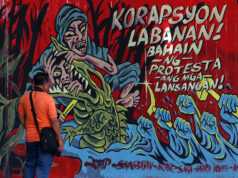DAVAO CITY — The Davao Oriental provincial government is gearing up to improve its competitiveness in agriculture and tourism, with the province also in the process of drafting a 10-year plan for these industries.
Gov. Nelson L. Dayanghirang has ordered his department heads to reorganize their units in six months and come up with comprehensive plans that will maximize the potential of the two sectors.
In a planning session last week, Mr. Dayanghirang said provincial officials “need to think outside the box” to maximize the potential of the two sectors.
One of the focus areas is coconuts through more industrialized production processes. According to the Provincial Planning and Development Office, coconut production in 2013 fell 54.6% after Typhoon Pablo destroyed about six million coconut trees.
The top nut producer in the Davao Region, the province also has some of the lowest yields, based on 2013 data. Meanwhile, Davao del Sur and Davao City increased their yields to 9.36 metric tons per hectare (MTH) and 7.99 MTH, respectively from 8.84 MTH and 7.71 MTH previously. Davao Oriental’s production fell to 4.9 MTH that year from about 6.8 MTH in previous years.
Another issue is the low price of copra, the main by-product of coconut, which fetches at most a farmgate price of P20 per kilogram.
Ednar G. Dayanghirang, the governor’s chief of staff, told BusinessWorld that it is important for both the province and the national government “to find solutions to the problem, or the industry will die a natural death.”
Other issues are pests, lack of fertilizer and old trees, which help explain the lower yields. The land area planted to coconut also declined between 2012 and 2017 at a rate of 1.5% annually.
Initially, the governor said there is a need for coconut farmers to be organized into cooperatives to increase the chances of funding.
He added that the provincial government is looking at investing in industrializing the industry. “This would help maximize the value of products and services as means of improving farmers’ income, generating more and better employment to ensure a stable and progressive economy,” he said.
The governor said the province has also become a top destination in this part of the country.
According to data from the provincial government, the province attracted 801,479 tourists in 2015 from 91,165 in 2012.
The province is home to Mt. Hamiguitan Range and Wildlife Sanctuary, which was declared a UNESCO World Heritage Site.
The provincial government said there is a lack of accommodations and other amenities for tourists, and other infrastructure.
The governor said the province has been allocated P2.5 billion by Congress for tourism roads and a sports complex. — Carmelito Q. Francisco


